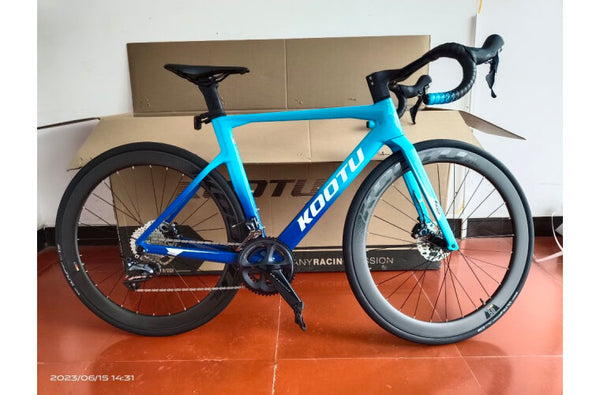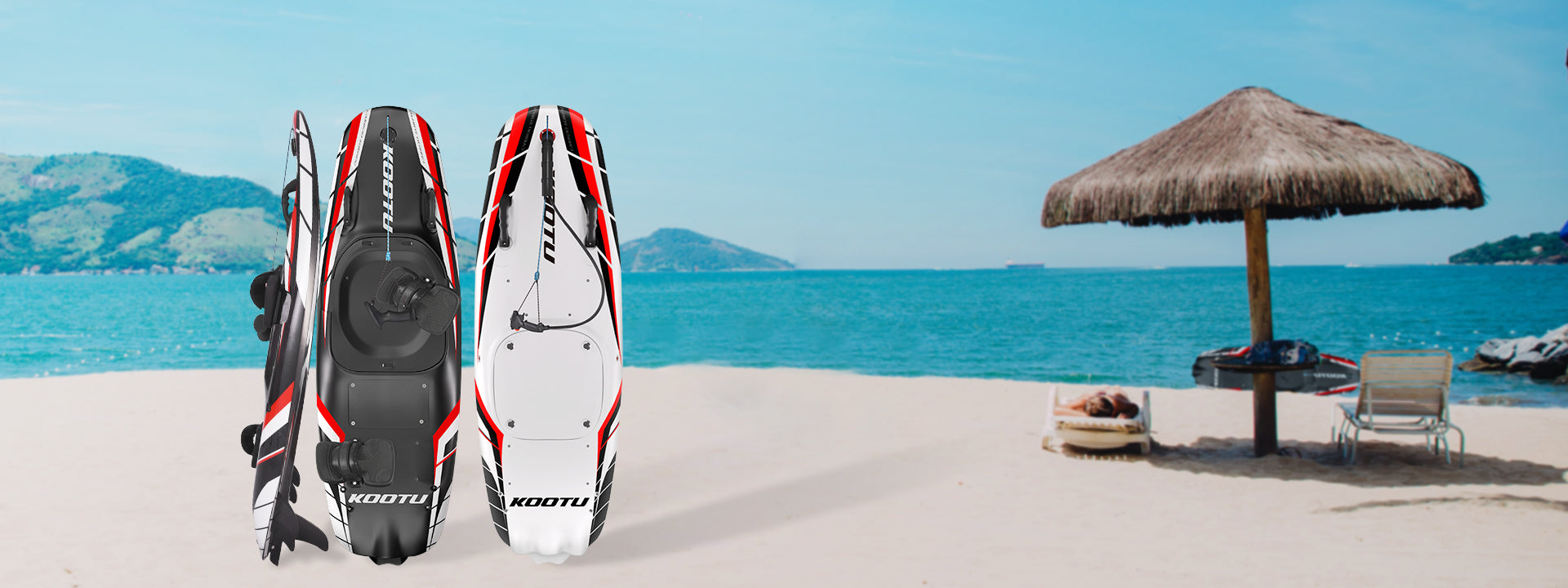700cbike ·
aerobike ·
bicycleroad ·
blackroadbike ·
carbonbikes ·
carbonfiberbikes ·
carbonroadbike ·
di2 bikes ·
KOOTU BIKES ·
mensroadbike ·
roadbike ·
roadbikes ·
roadbikesbrands ·
toproadbikes ·
How to make your KOOTU carbon bikes more comfortable?
Carbon bikes are known for their lightweight and high-performance capabilities. They are the go-to choice for many cyclists, whether they are professional racers or recreational riders. However, one common complaint about carbon bikes is their stiffness, which can lead to discomfort during long rides. If you're looking to make your carbon bike more comfortable, here are some tips to consider:

1. Choose the Right Frame Size
Ensuring that your carbon bike is the correct size for your body is essential for comfort. A bike that is too big or too small can cause discomfort and even lead to injuries. Consult a professional bike saler to determine the appropriate frame size for your height, leg length, and riding style.

2. Opt for a Carbon Seatpost with Shock Absorption
The seatpost of KOOTU carbon bikes with built-in shock absorption can significantly improve the comfort of your ride. These seatposts are designed to absorb road vibrations and reduce the impact on your body. Look for models that offer adjustable suspension settings to customize the level of comfort.

3. Invest in Quality Handlebar Tape
The handlebar is where you have direct contact with your bike, so it's crucial to have comfortable handlebar tape. Look for tape that provides cushioning and absorbs vibrations. Gel or cork tape are popular choices for their ability to dampen road buzz and provide a more comfortable grip.

4. Use Wider Tires
Switching to wider tires can significantly improve the comfort of your carbon bike. Wider tires offer more cushioning and better shock absorption, reducing the impact of rough roads. Additionally, wider tires allow you to run lower tire pressures, further enhancing comfort without sacrificing performance.

5. Consider a Carbon Fork with Damping Features
The front fork plays a crucial role in absorbing road vibrations. Upgrading to a carbon fork with damping features can help reduce the harshness of the ride. Look for forks that incorporate technologies like carbon layup variations or built-in elastomers to enhance comfort.

6. Use a Comfortable Saddle
A comfortable saddle is essential for long rides. Look for a saddle that suits your body shape and riding style. Many bike shops offer saddle fitting services to help you find the perfect match. Consider saddles with cutouts or channels to relieve pressure on sensitive areas.

7. Adjust Your Bike's Geometry
Small adjustments to your bike's geometry can make a big difference in comfort. Experiment with raising or lowering your handlebars, adjusting the saddle angle, or changing the stem length. These tweaks can help you find a more relaxed riding position that reduces strain on your body.

8. Wear Padded Cycling Shorts
Padded cycling shorts provide an extra layer of cushioning between you and the saddle. The padding helps to reduce friction and pressure points, enhancing comfort during long rides. Invest in high-quality shorts that are specifically designed for cycling.

9. Maintain Proper Bike Fit
Regularly check and adjust your bike fit to ensure optimal comfort. As you become more experienced or your fitness level changes, your bike fit requirements may also evolve. Consult a professional bike fitter to fine-tune your position and make any necessary adjustments.

10. Take Breaks and Stretch
Even with the most comfortable setup, it's essential to take breaks and stretch during long rides. This helps to alleviate muscle fatigue and stiffness. Incorporate short breaks into your rides, and perform simple stretches to keep your body feeling fresh and comfortable.
By following these tips, you can make your carbon bike more comfortable without compromising its performance. Remember, comfort is subjective, so it's essential to experiment and find what works best for you. Enjoy your rides and make the most out of your carbon bike!

1. Choose the Right Frame Size
Ensuring that your carbon bike is the correct size for your body is essential for comfort. A bike that is too big or too small can cause discomfort and even lead to injuries. Consult a professional bike saler to determine the appropriate frame size for your height, leg length, and riding style.

2. Opt for a Carbon Seatpost with Shock Absorption
The seatpost of KOOTU carbon bikes with built-in shock absorption can significantly improve the comfort of your ride. These seatposts are designed to absorb road vibrations and reduce the impact on your body. Look for models that offer adjustable suspension settings to customize the level of comfort.

3. Invest in Quality Handlebar Tape
The handlebar is where you have direct contact with your bike, so it's crucial to have comfortable handlebar tape. Look for tape that provides cushioning and absorbs vibrations. Gel or cork tape are popular choices for their ability to dampen road buzz and provide a more comfortable grip.

4. Use Wider Tires
Switching to wider tires can significantly improve the comfort of your carbon bike. Wider tires offer more cushioning and better shock absorption, reducing the impact of rough roads. Additionally, wider tires allow you to run lower tire pressures, further enhancing comfort without sacrificing performance.

5. Consider a Carbon Fork with Damping Features
The front fork plays a crucial role in absorbing road vibrations. Upgrading to a carbon fork with damping features can help reduce the harshness of the ride. Look for forks that incorporate technologies like carbon layup variations or built-in elastomers to enhance comfort.

6. Use a Comfortable Saddle
A comfortable saddle is essential for long rides. Look for a saddle that suits your body shape and riding style. Many bike shops offer saddle fitting services to help you find the perfect match. Consider saddles with cutouts or channels to relieve pressure on sensitive areas.

7. Adjust Your Bike's Geometry
Small adjustments to your bike's geometry can make a big difference in comfort. Experiment with raising or lowering your handlebars, adjusting the saddle angle, or changing the stem length. These tweaks can help you find a more relaxed riding position that reduces strain on your body.

8. Wear Padded Cycling Shorts
Padded cycling shorts provide an extra layer of cushioning between you and the saddle. The padding helps to reduce friction and pressure points, enhancing comfort during long rides. Invest in high-quality shorts that are specifically designed for cycling.

9. Maintain Proper Bike Fit
Regularly check and adjust your bike fit to ensure optimal comfort. As you become more experienced or your fitness level changes, your bike fit requirements may also evolve. Consult a professional bike fitter to fine-tune your position and make any necessary adjustments.

10. Take Breaks and Stretch
Even with the most comfortable setup, it's essential to take breaks and stretch during long rides. This helps to alleviate muscle fatigue and stiffness. Incorporate short breaks into your rides, and perform simple stretches to keep your body feeling fresh and comfortable.
By following these tips, you can make your carbon bike more comfortable without compromising its performance. Remember, comfort is subjective, so it's essential to experiment and find what works best for you. Enjoy your rides and make the most out of your carbon bike!













